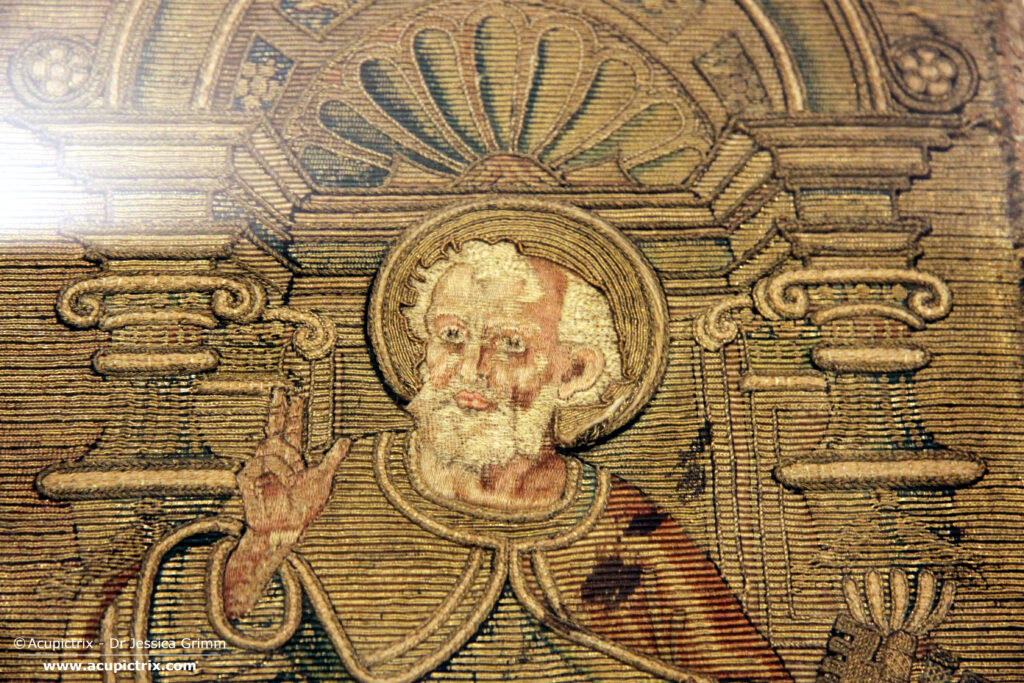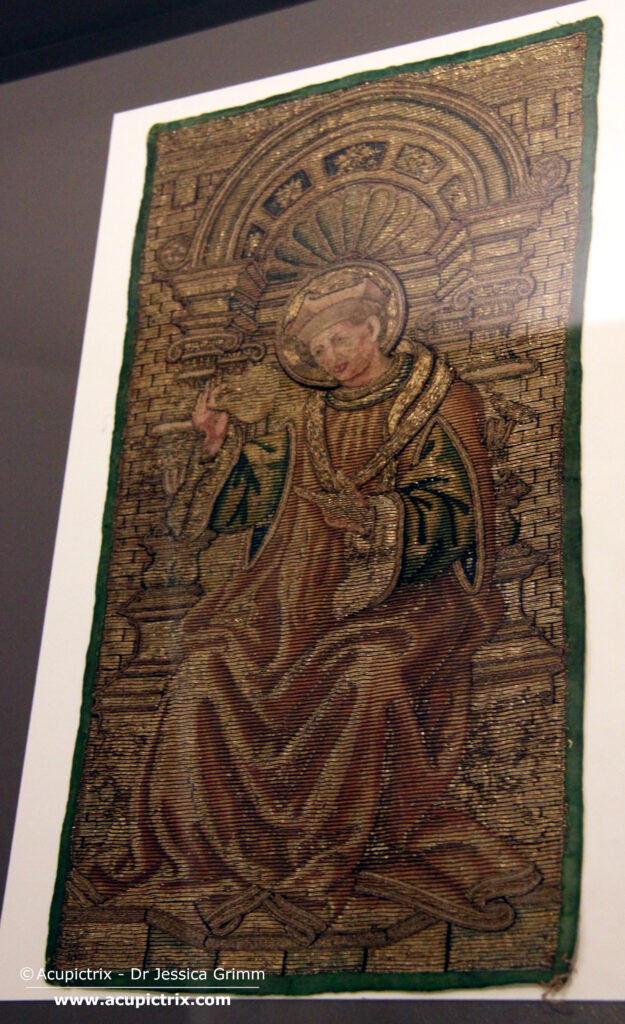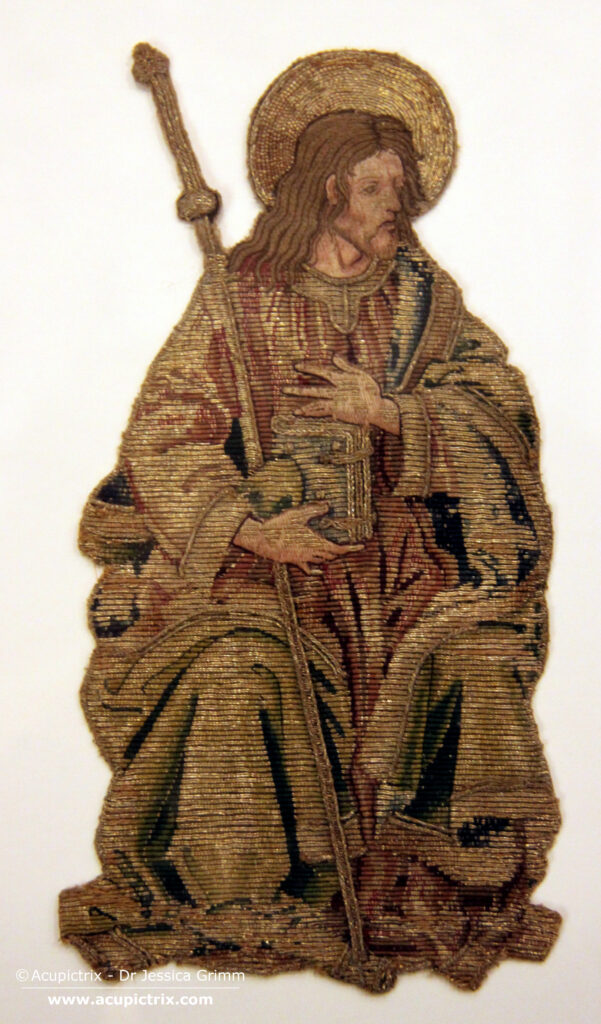We continue our exploration of medieval goldwork from Tuscany with a couple of stunning orphreys. One is kept in a museum, one in a Cathedral, and the third is in a private collection. In 2019, they were displayed side by side in Castello Buonconsiglio. All three are of exceptional quality, both in design and embroidery skills. They are so similar that they clearly belong to the same production centre. Let me introduce you to Saint Cosmas, Saint Peter and James the Greater. You can find more blog posts on medieval goldwork embroidery from Tuscany here and here.

The above medieval goldwork orphrey with St Peter once adorned a cope. The complete orphrey shows St Peter seated on a very ornate throne with columns and a vault. The embroidery consists of or nué or shaded gold. The threads run the entire width of the orphrey. The design of the figure and the background are worked in one go. Still, there is no coloured picture underneath the goldwork embroidery as shown in the RSN Stitchbank entry for or nué. That wasn’t done in the medieval period. A simple outline on the fabric was all the embroiderer needed. However, it is possible that a black-and-white or even a coloured design drawing was used to get the shading right.
The or nué is of very high quality, and the embroiderer was clearly skilled at shading. This is also visible in the detailed silk shading of the face. The stitches run strictly vertically over a set number of linen background threads. There’s no gold thread running beneath the silk shading.
Parts have been outlined with a single gold thread or with a twist to provide extra definition to the design. I particularly love the single thread outline around St Peter’s hair.

The medieval goldwork orphrey kept at the Museo Civico d’Arte Antico in Turin shows Saint Cosmas. The background is very similar to that seen on the orphrey of Saint Peter. And the embroidery techniques used are the same.
There’s much speculation as to who drew these outstanding designs. Some suggest it was Florentine painter Raffaellino del Garbo (AD 1466-1527). In his biography of the artisans of his time, Vasari states that Raffaellino was known for supplying embroidery designs.

The last example of medieval goldwork from Tuscany is a loose orphrey figure representing Saint James the Greater. It was made between AD 1490 and AD 1500 in Florence. The fact that this is a separate figure shows that the whole orphrey was made differently than the other two I showed you previously. Here, the figure and the background were worked separately and then sewn together. The silk shading of the hand is also worked on top of the gold threads. Still, the high-quality or nué and the style of the figure are clearly related to the other two pieces.
Art historians attribute the design of St James the Greater to Filippino Lippi (AD 1457-1504), an Italian painter who worked in Florence, Milan, and Bologna. As there were so many great painters in Florence at the time, it is no wonder that they provided the embroiderers of Opus florentinum with excellent designs.
Literature
Prá, L. Dal, Carmignani, M., Peri, P. (Eds.), 2019. Fili d’oro e dipinti di seta: Velluti e ricami tra Gotico e Rinascimento. Castello del Buonconsiglio, Trento.

Stunning, indeed! Thank you for this lovely post.
You are very welcome, Cindy!
Thanks for sharing this, Jessica! Or nué is so wonderful! Painting on gold with silk threads. Awesome.
Still I wonder what kind of design template they had to be able to do the shading as perfect like this. Maybe the or nué embroideres also were good painters to practice shading, forms of folds with light and shadows. I think it also requires a lot of knowledge about colors and their shadings. Shading a color is not just mixing some black color to it.
I am always deeply impressed.
Thank you for your post, Jessica. You have explained how the embroideries were done and their similarities very clearly. Great post!